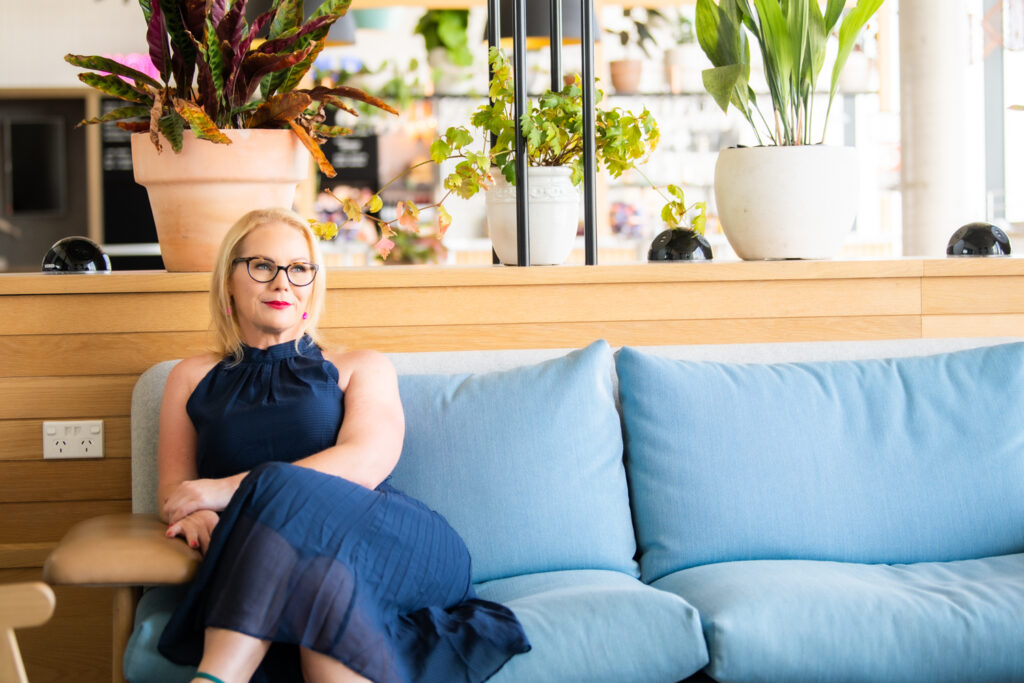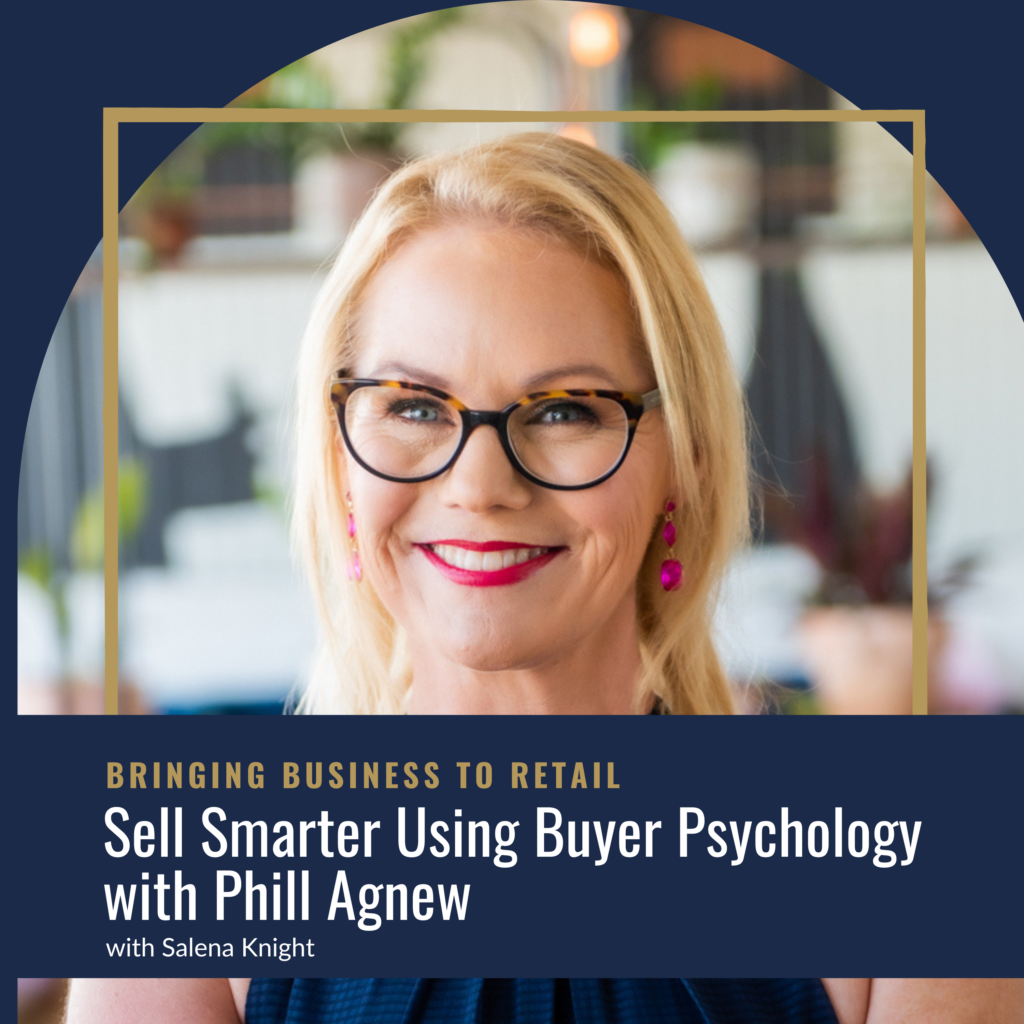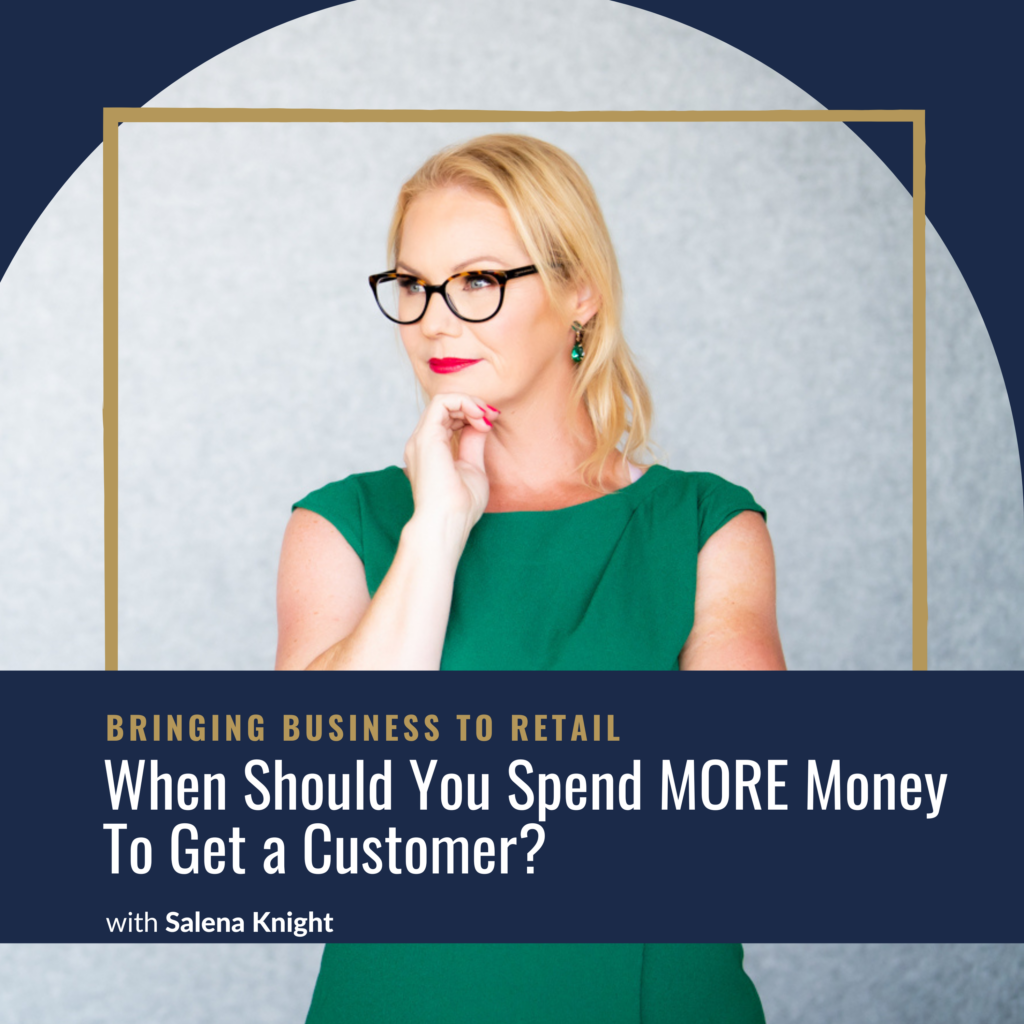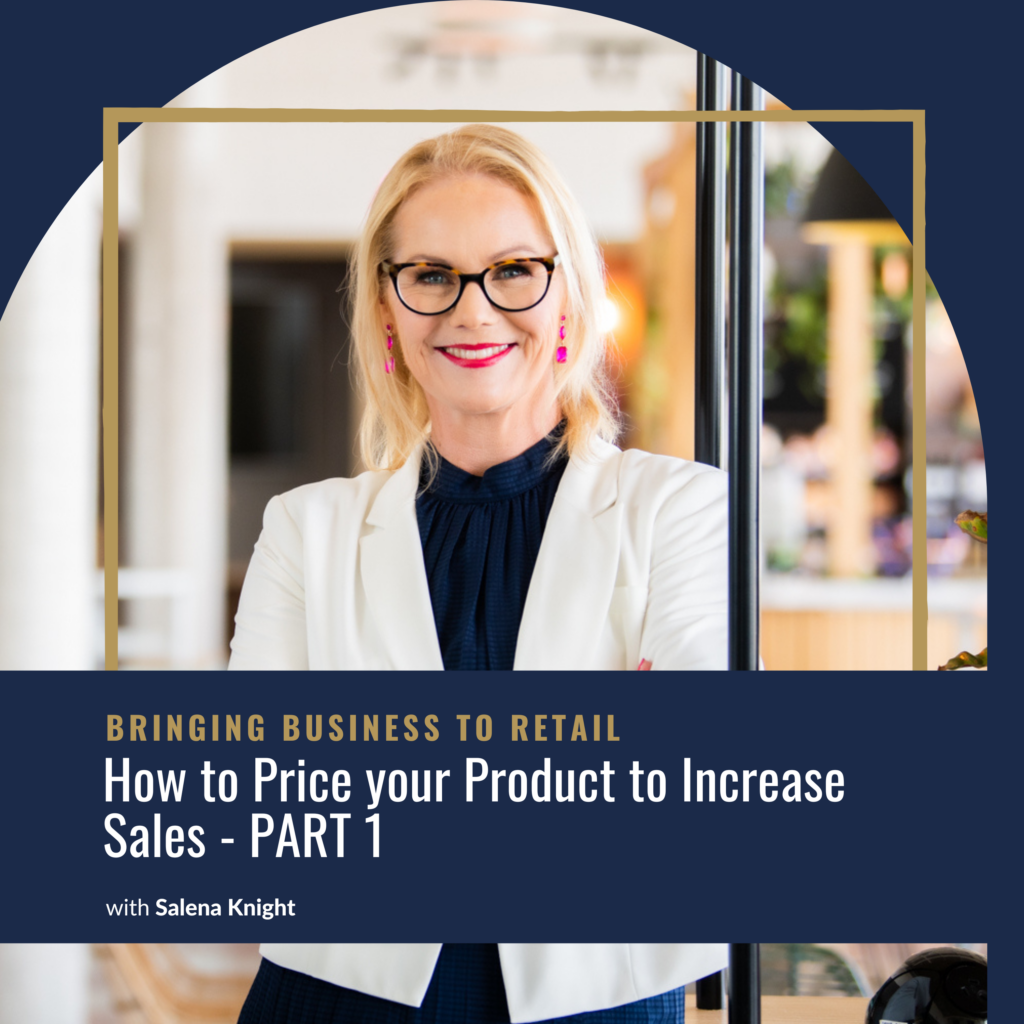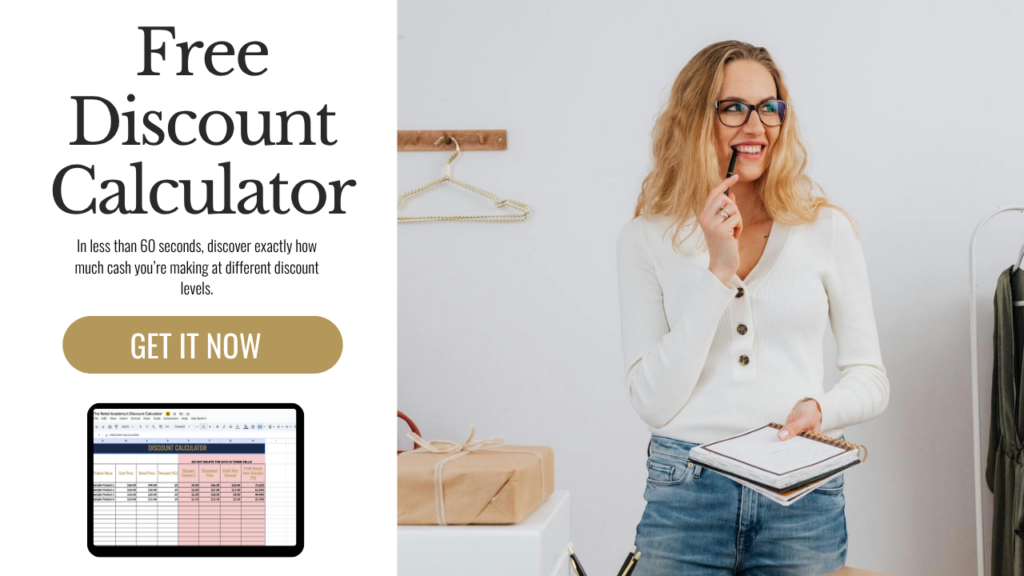
SHOW NOTES
Most retailers are stuck in transaction tunnel vision, treating every customer like a one-night stand instead of building relationships worth thousands.
When my house insurance premium doubled, I realized something profound about customer value. While they offered $100 discounts to new customers who’d jump ship next year, they completely ignored my lifetime value as a loyal customer willing to pay extra for convenience.
This episode breaks down the customer lifetime value formula that separates genius marketers from those throwing money at the wall. You’ll discover why one customer worth $50 isn’t always better than one worth $30, and how understanding CLV lets you make decisions that seem crazy to competitors but are actually brilliant.
In this episode:
- The simple CLV formula (no PhD required)
- Why a $30 customer can be worth $1,380 over time
- Three strategies to increase CLV immediately
- How to spend marketing dollars like a genius
- Why most retailers have their budget allocation backwards
Stop chasing quick wins and start building relationships that generate predictable, profitable revenue for years to come.
Sal
LISTEN NOW on The Bringing Business To Retail Podcast
Our house insurance is due for renewal now. It's one of those boring life tasks that needs to be done, and because it's personal insurance, the broker that we normally use isn't an option. Now, the renewal notice came through this week and the premium has doubled since last year. Now, we haven't made a claim on the insurance or the amount that we are covered for hasn't changed.
So the increase just seems absurd now. Most years, I'm just happy to pay the few extra dollars because I just can't be bothered entering all my details into a comparison site, getting the endless phone calls and emails, trying to sell me insurance, even if I've already purchased it elsewhere. Quite simply, the hour or sometimes two hours that it would take to do all of the comparison stuff and then sign up to a new provider is worth more to me than the.
40, 80, a hundred dollars premium increase. I will literally pay for the convenience, which means if you treat customers like me, we will stick around and we'll spend a lot of money with you. In the case of my home insurance, I'd have a pretty high customer lifetime value or CLV. And understanding CLV is actually the secret to selling way more stuff to the right people at the right price while spending your marketing dollars like a genius.
Instead of feeling like you're throwing money at the wall and hoping that something sticks. Most retailers are stuck in what I call the transaction tunnel vision. They're so focused on today's sale, this week's revenue, this month's numbers that they miss the big picture. They're treating every customer like a one night stand instead of building relationships that could be worth thousands of dollars over time.
But the retailers who understand customer life phone value, they play a completely different game. They know exactly how much they can spend to acquire a customer, which customers are actually the most profitable, and how to structure their entire business around maximizing long-term value instead of just chasing quick wins.
Now while my insurance company was busy offering a hundred dollars off to new customers who will probably jump ship next year for a better deal, they completely ignored my lifetime value as a loyal customer who was happy to pay extra for convenience, and they offered me no incentive to stay even after I asked If we haven't met before.
I'm Selena and I and I create solutions that make money for retail and e-commerce stores. And thank you so much for joining me here on the Bringing Business to Retail Podcast. Today I'm going to break down the customer lifetime value formula. In simple terms, I'm gonna show you how to calculate it for your business, and I'm gonna give you three concrete strategies that you can use to increase it immediately.
And by the end of this episode, you will know exactly how much each customer is really worth to your business, and more importantly, how you can make them worth even more. So grab your calculator. Actually don't. We're gonna keep the math super simple, and let's dive into the metric that is going to transform how you think about your customers and acquiring them, and where you spend your marketing dollars.
Alright, let's start with the basics. Customer lifetime value is the amount of money that a customer will spend with you and your business over the entire duration of their relationship with you. It's literally what it says on the box, how much they're worth over their lifetime with you. So not just their first purchase, not just the first year, but their entire lifetime as your customer.
It's something that honestly, I never factored in when I opened my first store because if I had, I might not have decided to niche down to only cover pregnancy to the age of two. Because the reality is the maximum amount of time that a customer could realistically spend with me was three years. Oh, I mean, there is nothing like hamstringing your growth by restricting customer lifetime value.
Well, we live alone, right? Customer lifetime value is not just for big box retailers. It is actually, I'm gonna say it's more important for independent stores like yours because you can't afford to waste money on unprofitable customers or marketing channels that don't bring you ROI. So let me give you a simple example to illustrate why this matters so much.
Let's say that you own a skincare brand, customer A, let's call her Jenny. She comes in and she spends $50 on a face cream, but Jenny never comes back. Customer B is Amy, and she spends $30 on her first visit, but then she comes back every two months for the next three years and spends on average $75 each time.
So who's the most valuable customer? Well, obviously Amy, right, customer B, but here's the kicker. If you are only looking at that first purchase data, they look like customer A Jenny is actually better, but because she spent $50 immediately does not mean she's the best customer for your store. And this is why so many retailers make terrible decisions about where to spend their marketing money.
So the real eye-opener comes when you calculate the numbers. Jenny customer, A $50 lifetime value, Amy, customer B $30 first purchase, plus 18 visits over three years at $75 each. That is a $1,380 lifetime value that is over two and a half thousand percent difference. Now. So when you look at it like that, it becomes crystal clear that finding and nurturing and getting more people like Amy should be your priority, not just to get more Jennys, but here's the really fascinating part.
From a psychology perspective, most customers don't start as customer A or customer B. They don't start as a Jenny or an Amy. They become them based on how you treat them after that first purchase. And this is where understanding your customer lifetime value becomes a superpower. When you know that average customer lifetime value, you can make decisions that seem crazy to your competitors, but are actually pretty brilliant.
You can afford to spend more on customer acquisition because you know the long-term payoff and you can afford to provide better customer service, higher quality products, or more generous return policies because you are optimizing for lifetime value, not single transaction profit. So there is also something called the CLV Multiplier effect.
Research shows that increasing your customer retention by just 5% can increase your profits by anywhere from 30 to 95%. And that's because repeat customers typically spend more per transaction. They refer other customers, and you know what? It costs less to serve them over time. Think about it, your existing customers already trust you.
They already know how to web navigate your store or your website, and they understand the product quality that you have. The cost to selling them again and again is a fraction of what it costs you to get a new customer. But most retailers spend 80% of their marketing budget on acquisition and only 20% on retention.
That is completely backwards when you understand CLV. Now, it's not just about how much customers spend, it's about profitability over time. So Rachel is a customer who buys your high margin, high products, but not very often. Now, if we compare her to Trish, who comes in a couple of times a month, but buys a really low margin item, Rachel, may you well be a more valuable customer for you rather than the person who comes in more often and buys the less profitable product.
This is why understanding your product margins in relation to your CLV is critical. So let's talk about the time factor too. Customer lifetime value isn't static. It changes based on your business model, your industry, and how long your customers typically stay with you. So someone like subscription coffee company, they might calculate this customer lifetime value over two years.
But a mattress shop might be looking at 10 years because customers don't generally need a new mattress every single year. The biggest mistake I see retailers make is assuming that customer lifetime value is too complicated to calculate, or that they just don't have enough data. I mean, you don't need a PhD in statistics, or you don't even need expensive software.
You just need some basic math and a willingness to look beyond immediate sales numbers. Even if you sell products that typically people buy once, like furniture, wedding dresses, or jewelry, when you understand your customer lifetime value, it's gonna help you to identify your most valuable customer segments, and it's gonna help you optimize your marketing spend to structure your pricing.
Get your service levels at a point that becomes more for your customer. But before you can optimize your customer lifetime value, you actually need to know what it is. And so that's what I want to dive into next. And don't worry, I'm gonna give you, give you a super simple version that actually works for real businesses, not an over complicated academic formula that requires data that you probably don't have.
And of course there's an app for this. So your basic customer lifetime value formula is your average order value. You already know that your purchase frequency. Your gross margin and your customer lifespan. So your average order value, straightforward, it's the average amount that a customer is going to spend per transaction.
So if you've made $10,000 from 200 orders in the last three weeks, then your average order value is $50. Now, most point of sale systems and e-commerce platforms will calculate this for you automatically. So you don't have to do anything, you just have to grab the data. Your purchase frequency is how often a customer buys from you in a given time period.
And if you're using Shopify, it should show you the purchase frequency on there. And this is where many retailers get tripped up because they try to be too precise to calculate the purchase frequency. You've got your total number of orders in a year and divide it by your total unique customers. So if you had a thousand orders and 400 unique customers last year, your purchase frequency is 2.5 times a year.
So we're multiplying average order value by purchase frequency, by gross margin. So margin is one of these tricky things that people can get a little bit confused of and gross and net sometimes if you are not from a financial background. You can get them mixed up. So your gross margin is your profit margin after your cost of goods sold.
So if you sell a product for a hundred dollars and it costs you 60, then your gross margin is 40% or $40. Now this is crucial because your CLV needs to reflect actual profit, not just revenue. There's no point acquiring customers who generate revenue but cost you money in the long term. So we're multiplying average order value by purchase frequency, by gross margin, by customer lifespan.
So that is the average length of time that someone remained an active customer. Now, this is where, in hindsight, I might've made different decisions when I first opened my store because I had niched down so far to have just products that served pregnant women and babies up to the age of two. So my maximum customer lifespan was three years.
So this is often the trickiest part to calculate. Now your Shopify or POS doesn't show you this out of the box. You'll generally need a third party app. A simple approach could be to grab a handful of customers and look at when customers made their first purchase and when they made their last purchase, and then just calculate the average.
Start with an educated guess, and then you can refine as you gather more data, or you can just put an app in place for that. So I wanna give you a real world example. Say you run an online pet store, your average order value is $75. Your customer generally purchase six times a year. So every two months.
Your gross margin is 35%, and customers generally hang around for four years, so your customer lifetime value would be $75 times six times a year, times 35% times four years, and that's gonna give you $630. This means each customer generates around $630 in revenue for your business over their lifetime. Now, this is where it gets strategic because it tells you what you can afford to spend on customer acquisition and still remain profitable.
Now you can't spend the full $630 in revenue because you still have operating expenses like rent and staff and business costs. A good rule of thumb is to spend no more than around 20 to 30% of your customer lifetime value on customer acquisition. So in this case, it would be. Around about 120 to just under $200 per customer.
Huh? Have you ever looked at your acquisition cost and maybe it's 50, 60, $80, and you're like, that's too high. Knowing this, well, suddenly you can bid more aggressively on Google. You can invest in better email marketing, or you can maybe hire influencers because you know the math works. You are not just guessing.
You have data that shows that acquiring customers at this cost will be profitable over time. One of the retailers that we work with, Terry, he owns a jewelry store and they sell both new and vintage products. Now what Terry found was that whilst their Google Ads acquisition cost was higher than their Instagram customers, the Google cost, the Google Ads tended to bring in customers who purchased the vintage jewelry, whereas the Instagram brought people in who purchased the fast fashion.
So the vintage jewelry had a much higher margin, and those people generally came back more than once. Whereas the Instagram and the TikTok crowd, they generally purchased new fast fashion style jewelry. That was a much lower price point. It had a much lower profit margin, and they didn't tend to shop more than once.
So you might discover that customers from different channels have much higher customer lifetime values, which you can then use to inform you of where you should spend your marketing dollars. Huh. Or you might find customers who buy certain product combinations stay with you longer. So like Terry found that the people who bought vintage jewelry hung around for a lot longer than people who bought the new jewelry.
Remember, customer lifetime value is ultimately about making better business decisions. If you are spending $50 to acquire a customer with a $200 customer lifetime value, that is very different from spending $50 to acquire a customer who only has a $75 customer lifetime value. The first scenario is gonna give you room to invest in customer experience and retention.
And the second well, that means you really have to struggle to get them back. So once you have your customer lifetime value calculated, the real question becomes how do you increase it? And that is what we're going to tackle next. All righty. Now that you know how to calculate your customer lifetime value, there are only four real ways to improve that customer lifetime value.
You can increase your average order value. You can increase your purchase frequency, you can extend your customer lifespan, or you can improve your margins, or you can do many of the above. I'm gonna give you three strategies to tackle multiple levers at once. Ready? All righty. The first one is building systems that keep customers coming back.
So the biggest impact on customer lifetime value comes from keeping your customers longer and getting them to buy more frequently. And this is where most retailers have so much untapped potential because they're focused on getting new customers instead of maximizing the existing ones. So email marketing, I mean.
Most people send out emails, but they send generic newsletters or they send promotional blasts. But CLV focused email marketing is about creating value driven sequences that nurture that relationship over time. So you can achieve this by setting up automated email flows that are based on customer behavior.
Welcome sequences for your new customers that educate your customers and about your products, and tell them about your brand story. You can do it in post purchase follow ups that help them to get the most value from their purchase. You can do it using replenishment reminders for those consumable products, or you could do a win back campaign for customers who haven't purchased for a while.
The key is to provide value, not just push sales. If you sell skincare, send out tips about application techniques. If you sell clothing, share styling advice. If you sell pet products, provide pet care tips. The goal is to position yourself as a trusted advisor and not just another store. Oh, and loyalty programs.
They're another powerful retention tool as well. But, but huge caveat here. They need to be designed around those customer lifetime value principles. I am not a fan of points for purchases. I like to reward behaviors that increase the lifetime value. So you could do things like giving bonus points for reviews or referrals or social shares, or completing feedback forms.
Make the rewards really meaningful enough so that customers change their behavior to earn them. Now, customer service excellence, I feel, is a bit of a non-negotiable for CLV optimization. Every interaction is an opportunity to either decrease or increase the future lifetime value. So train your team to think beyond the immediate issue to more along the lines of a long-term relationship.
Sometimes taking a short term loss on a return is worth it in the long term. Now, here's something most retailers miss, creating reasons for customers to engage with you between purchases. Now this could be educational comment. It could be communities that you build. It could be social media groups. It could even just be personal check-ins.
I know for Christine when she ran her birthday campaign, she actually asked people to add a note about what she should look forward to now that she's 40 and she was flooded with responses when people purchased. See, the more touch points you have, the stronger the relationship and the higher the likelihood that people are going to come back again and again.
All righty. So strategy number one, build those systems that keep your customers coming back. Strategy number two. Well, I. I like to call it the a OV accelerator. So you know, if you've been here before, you know I love me. A good bundle, a good upsell, a good cross sell, and increasing what customers spend per transaction has an immediate impact on your customer lifetime value.
But this isn't about being pushy, it's about helping customers to get more value from each purchase product. Bundling is one of the most effective tactics. Look at your sales data and look at the products. What are the things that are frequently bought together? And then create bundles. Maybe you offer a slight saving compared to buying individually.
I mean, you don't always have to put a discount on a bundle. The psychology here is powerful. Customers feel like they're getting a deal while you are increasing your average order value. And then. I also like threshold incentives. So you quite often see when you go to a website, free shipping on orders over $75 or get a free gift with purchase when you spend a hundred dollars.
The key there is to set that threshold for people to, and you'll have noticed this when you want to go and buy the thing with a give with purchase, it's always more than the lowest value thing. So I'm thinking when I, at Christmas time, I wanted to buy some skincare for my daughter and. Of course it was a gift with purchase, but the cheapest item was $50 and you had to spend $60 to get the gift with purchase.
So it really is about thinking about that profitability. It's not about just giving money away. You've gotta give to get, okay. So set that threshold slightly above your current average order value to get your customers. To add just one more item in. And then there's cross-selling. So I love cross-selling when it really solves a problem or it enhances the original purchase.
It doesn't work if you're just suggesting random products. You have to recommend items that genuinely improve the customer's experience with the thing that they originally came here to buy. So to recap, to increase your customer lifetime value, you're going to build systems that keep your customers coming back.
You're gonna get smarter about increasing your average order value with bundles and upsells and cross sells. And strategy number three is about creating predictable recurring revenue. My favorite, I think I've said my favorite a few times. I just love it when I can help you guys make money. So this is where customer lifetime value gets really exciting because you are essentially guaranteeing future purchases instead of just crossing your fingers and hoping for them.
So even if you don't sell traditionally subscription worthy products, there are always ways to create recurring revenue streams. Now for consumable products, this is straightforward. You can offer auto delivery with or without a discount. I mean, customers love the convenience of not having to remember to order.
I'm gonna put my hand up and say, I am one of those people. But you, you love the predictable revenue and the higher customer lifetime value. I have so many consumables on autoship, from toilet paper to dog food, even my spelt flour. But what about those non consumable products? Well get creative. A clothing retailer could offer a seasonal styling service.
A home good store could create a seasonal day decor subscription, and a pet store could offer monthly surprise treat boxes. The key is to finding the angles that make sense for your customers and your business. Now, membership programs are another really powerful model that I think too many retailers underestimate.
Instead of just loyalty points, create a paid membership that provides ongoing value. It's gonna give them exclusive access, special discounts, maybe even free shipping, or early access to sales or educational content. Now, if you haven't already listened to the episode, when Natalie Santini from So Hungry Hippie, so I say this, so Hungry Hippo all the time, so Hungry Hippie came in, she sells fabric, but she actually has multiple subscription offers and a membership program.
All of which bring in hundreds of thousands of dollars every single year. The psychology behind subscriptions and memberships is fascinating. 'cause once customers commit to an ongoing relationship, they develop what's called loss aversion. They don't wanna give up what they've already invested in, and this dramatically increases your customer lifespan and of course, your customer lifetime value.
Remember, increasing CLV isn't about manipulating customers into spending money that they don't have. It's about creating so much value that your customers naturally want to deepen their relationship with your brand. When it is done right, strategies that increase customer lifetime value, also increase customer satisfaction and loyalty.
The businesses that master customer lifetime value thinking don't just grow revenue, they actually build sustainable, profitable businesses with a more predictable cash flow and customers, well, they become boomerangs and drum beaters for the brand. So CLV isn't just a metric, it is a completely different way of thinking about your business and it can transform your profitability.
Before we finish up, I wanna quickly recap what we talked about today. First was that mindset shift of stopping. About stopping thinking of transactions as a one-off and start thinking of it as a relationship. And every customer is a potential revenue stream worth hundreds of thousands of dollars over time, not just today's purchase amount.
So the second is the formula. Your CLV is your average order value times your purchase frequency, times your gross margin, times your customer lifespan. So this is gonna give you the total profit value of each customer relationship, which then will allow you to guide the decisions that you're going to make in regards to marketing and customer service.
And then I gave you three strategies. Focus on retention systems that keep your customer coming back. Implementing ways to increase your average order value and maybe exploring subscription or membership models that create a more predictable recurring revenue for you and build that customer loyalty.
But here's the most important thing. CLV thinking changes how you invest in your business. When you know a customer is worth $500 over their lifetime, you can afford to spend a hundred dollars on acquisition and still be highly profitable. Your competitors who are only looking at the $30 first purchase, they can't compete with that level of investment that you are putting in.
So here's what I want you to do this week. You know, I love a good action taking step. Calculate your CLV using that formula I gave you, and then start with your overall averages, and then segment them out by maybe your top traffic source or your top customer type. You might be shocked at what you discover.
So once you have those numbers, ask yourself, if I knew that every customer was worth this amount over their lifetime, what would I do differently? Would you invest more in customer service? Would you spend more on higher quality products? Would you change where you do your marketing? Would you be more generous with your return policy?
Would you take on a marketing channel that seemed to be too expensive before? Hmm. Lots to think about. I would love to hear what you discover. DM me on Instagram. I'm at the Celine and I, and tell me your customer lifetime value, numbers, and the insights that they gave you about your business. I'm always excited to celebrate these moments with you.
Oh, and you'll be happy to hear I am now with a new insurance company. Thank you so much for joining me on the Bringing Business to Retail podcast. I look forward to seeing you on the next episode. So that's a wrap. I'd love to hear what insight you've gotten from this episode and how you're going to put it into action.
If you're a social kind of person, follow me at the Selena I. And make sure to leave a comment and let me know. And if this episode made you think a little bit differently or gave you some inspiration, or perhaps gave you the kick that you needed to take action, then please take a couple of minutes to leave me a review on your platform of choice.
Because the more reviews the show gets, the more independent retail and e-commerce stores just like yours that we can help to scale. And when that happens. It's a win for you, a win for your community, and a win for your customers. I'll see you on the next episode.
Share this episode
Watch The Video


